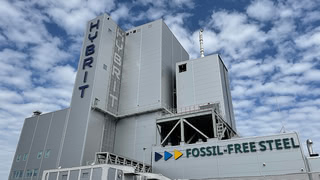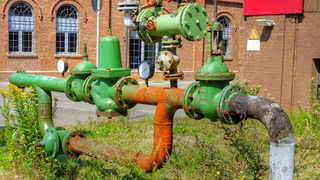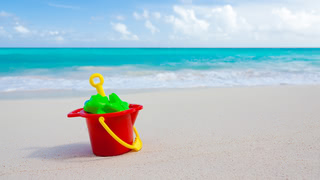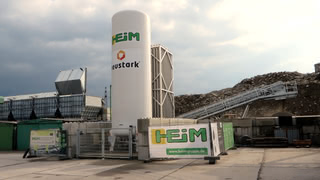Is Sweden's Green Steel Transformation still on Track?
The Swedish state mining company LKAB is delaying some of its more ambitious plans for a green steel transformation. However, other green steel projects in the Nordic country are proceeding.
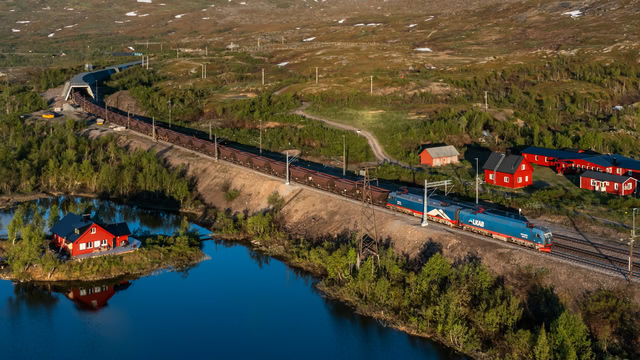
It is hard to overstate how harmful today's steel industry is to the earth's climate. Direct emissions from steelmaking are responsible for around 7 percent of worldwide carbon dioxide emissions. Steelmaking requires a chemical process that converts iron oxides into iron. Usually, this is done in blast furnaces using coal, and those are the main reason for steel's massive carbon footprint.
But in 2016, three Swedish companies came forward and said that there is another way. The steelmaker SSAB, the mining company LKAB, and the electricity company Vattenfall presented the Hybrit project, a plan to decarbonize Sweden's steel industry using green hydrogen. The technology has since been tested in a pilot plant at SSAB's site in Luleå.
Mining company LKAB has "put the Brakes" on Green Transformation
Recently, however, Swedish media reports indicate that "LKAB has put the brakes on fossil-free transformation". Some of LKAB's more ambitious plans have been delayed.
LKAB, a state-owned mining company, operates three iron ore mines in Sweden's Norbotten province, two in Kiruna and one in Gällivare. SSAB operates blast furnaces - the coal-based process that causes steelmaking's high emissions - at two locations in Sweden (Luleå and Oxelösund) and one in Finland.
SSAB is the only steel producer in Sweden, and it uses only a fraction of the country's iron ore, most of which is exported.
The new green steelmaking process involves two major steps. In the first step, iron ore pellets are converted into so-called sponge iron using hydrogen. The process is also known as direct reduced iron or DRI. The key innovation is that this can be done without involving any fossil fuels or carbon. (DRI itself is not a new technology, but existing DRI plants use fossil gas instead of hydrogen.)
In the second step, sponge iron is melted in an electric arc furnace. Electric arc furnaces are an established technology in the steel industry. Apart from using DRI-based sponge iron, they are commonly used to process scrap steel for recycling.
Further developing their decarbonization plans, SSAB and LKAB agreed to split those two steps between the companies. LKAB would produce hydrogen and convert its iron ore pellets into sponge iron at its mine in Gällivare. SSAB would build electric arc furnaces and further downstream processes to convert sponge iron into various steel products. SSAB has already started building an electric arc furnace at Oxelösund, and earlier this year, the company announced that it will proceed with an investment in Luleå involving two electric arc furnaces.
This plan involves not just a conversion of Sweden's steel sector to greener processes but also changes LKAB's role. It moves an important part of the process chain towards the mining company.
In 2022, LKAB announced even more ambitious plans. Instead of just processing the iron ore from its mine in Gällivare, LKAB indicated that it wanted to rapidly build more DRI plants, up to a scale of 24.4 million tons. That would mean that LKAB would process most or all of its iron ore into sponge iron.
LKAB's plans would've increased Sweden's electricity consumption by 50%
Essentially, what LKAB was now planning was not just to decarbonize the steel industry in Sweden but also indirectly in other countries. This new plan, when fully realized, would consume 70 Terawatt hours. It would increase Sweden's total electricity consumption by more than 50 percent.
At the time, LKAB wrote: "This will enable a reduction in carbon dioxide emissions among global steel industry customers corresponding to nearly all of Sweden's current greenhouse gas emissions.".
When Swedish newspapers report that LKAB is "putting the brakes" on its transformation, it refers to these much more extensive plans. LKAB writes that "the production of fossil-free sponge iron in Kiruna is moved forward to the 2040s." Kiruna is the location of LKAB's larger mines. "In Gällivare, the work is proceeding as planned with the HYBRIT technology and the demonstration plant for sponge iron."
If LKAB's plans in Gällivare proceed, LKAB would still produce enough sponge iron to decarbonize the steel industry in Sweden. LKAB is currently in the permitting process for the first plant in Gällivare. A second one is planned to be built around 2030. The permits for the first plant appear to have taken longer than LKAB expected. The company wrote earlier this year: "The transition in Sweden is still hindered by time-consuming and unforeseeable permitting processes."
LKAB's project partner SSAB says that their plans are unaffected by the new developments. Gunilla Hjalmarson, spokesperson of SSAB, told me: "SSAB only buys from Gällivare, we have never bought from Kiruna. So it does not affect us."
LKAB puts focus on Rare Earth Metals
Part of the reason why LKAB is delaying its plans is that the company wants to focus on mining other metals. LKAB plans to expand its mining towards a deposit of iron ore and rare earth metals. The latter are used in many high-tech applications. Due to their use in wind turbines and electric cars, rare earth metals are also important resources for the energy transition.
LKAB also faced challenges securing sufficient electricity supply. According to media reports, LKAB and Vattenfall had difficulty agreeing on electricity off-take agreements. Sweden's Norbotten province has very low electricity prices due to cheap hydropower, which is a major reason why many of Sweden's energy-hungry green industrialization projects are located there.
But if electricity consumption is increased on a massive scale, those old hydropower plants cannot deliver enough energy. Vattenfall signaled that a substantial expansion of green electricity production via wind energy would come at a higher price tag.
LKAB and SSAB are not the only cleantech projects planning to use cheap electricity in Sweden's north. Others want to produce green fertilizers, EV batteries, or green methanol. Furthermore, Hybrit is not the only green steel project in the region.
The company Stegra, previously known as H2 Green Steel, is building a green steel plant in the Boden municipality, not far from Luleå. Stegra was created by the same investors that founded the battery company Northvolt.
While Stegra uses a slightly different process, its plans are very similar to the ones by LKAB and SSAB: use green hydrogen to make sponge iron in a DRI plant and make steel in an electric arc furnace. Unlike Hybrit, at Stegra's plant, both major process steps are performed by the same company at the same location.
As Stegra does not rely on LKAB's sponge iron, it is unaffected by the delays. If anything, LKAB not making as much sponge iron may benefit Stegra, as LKAB may be more willing to sell iron ore to them.
Stegra faced some challenges in sourcing iron ore for its operations. According to media reports in 2023, LKAB was unwilling to sell iron ore to Stegra, and some saw that as a sign that the state mining company would favor its partner SSAB over other steel companies. LKAB cited capacity limitations on the railway line Malmbanan as the reason.
In the meantime, Stegra has announced partnerships with Rio Tinto to purchase iron ore pellets and with Kaunis Iron, another Swedish steel mining company.
Stegra's spokesperson Karin Hallstan wrote that LKAB's change of plan does not directly affect them. "We continue the dialogue with them and other players in Sweden on supply of iron ore."
Initially, Stegra had announced it would start production in 2024. More recently, the company announced a production start in 2026. While that indicates that original timelines were too optimistic, such a delay does not appear unusual for a project of this size.
Green Steel projects face headwinds in Sweden
While Sweden's green steel projects are widely welcomed internationally, and many in the climate community see them as the kind of efforts that the steel industry should have been doing many years ago, they are facing considerable criticism within Sweden. An organization called the Scandinavian Policy Institute (Skandinaviska Policyinstitutet) has published multiple reports critical of the green steel projects that have received widespread media attention.
Some of the claims in those reports appear surprising. A central claim of the first report is that traditional mining companies still focus on the blast furnace process: "The lock-in to hematite ore and blast furnaces is demonstrated not least by the fact that the four largest international mining companies believe that the traditional process will continue to apply in the long term. They argue that existing fossil-free alternatives have no significant potential to reduce emissions. Instead, the world's four largest mining companies are focusing on trying to make the traditional process fossil-free."
At least one of those large mining companies definitely does not fit that description. The world's fourth-largest steel mining company, Fortescue from Australia, and its chairman, Andrew Forrest, have been very vocal in their support for hydrogen-based steelmaking.
The implied claim that mining companies might make the traditional process fossil-free also seems doubtful. Options for substantial emission reductions in blast furnaces are limited. The use of charcoal from wood comes with considerable deforestation risks and upstream emissions. Carbon capture and storage (CCS) in blast furnaces is considered extremely challenging, and no steel company is investing substantially in this path.
Stegra critic accused of spreading Falsehoods
Economics professor Magnus Henrekson, who has coordinated these reports, has been a particularly vocal critic of Stegra, the company building the green steel plant in Boden. In an opinion article for the newspaper Dagens Nyheter, Henrekson had recently claimed that Stegra plans to use fossil gas instead of hydrogen. Stegra denies this: "We will reduce our iron ore with green hydrogen, nothing else," Stegra's spokesperson Karin Hallstan wrote to me.
Stegra critic Henrekson later admitted to the publication Dagens Industrie that the claim was a mistake. It is questionable whether using fossil gas would even be viable for Stegra. Sweden has only a limited gas grid, and Boden is nowhere near any existing gas infrastructure.
SSAB's plans have also faced criticism lately. An analyst from the bank Nordea, Anders Åkerblom, has questioned SSAB's investments in Lulea. However, an analyst from the bank DNB, Johannes Grunselius, was more in favor of SSAB's investment: "We believe that this bold strategic move is reasonable."
I asked Anders Åkerblom what he thinks SSAB should do instead, but he has not answered. Due to upcoming changes in the EU's emission trading system, it will become increasingly challenging and expensive to operate high-emitting processes like blast furnaces within the EU.
Part of the controversy is rooted in conflicts between industries from different regions in Sweden about access to cheap electricity. Sweden has multiple electricity bidding zones, with low prices in the north and higher prices in the south. The mentioned Scandinavian Policy Institute was founded by a south-Swedish industry association (Handelskammaren).
"The projects are so demanding that, if they were implemented, they would negatively impact on the rest of the industrial sector in the entire country," Stegra critic Magnus Henrekson wrote in an email to me. "I had financed the whole project privately myself (12 private individuals and three research foundations). The Scandinavian Policy Institute was the only organization with the guts to host our project."
While Sweden's green steel projects are facing delays and headwinds, it does not look like the transformation is stopping. LKAB, SSAB, and Stegra all seem committed to producing substantial amounts of hydrogen-based green steel within the coming years. However, LKAB's extremely ambitious plans for emission reduction not just in Sweden but everywhere else where LKAB's steel is used are currently on hold.
Confused about the various sites of steel plants, mines, and green steel projects? Here's a map of Swedish mines, steel plants, and locations of green steel projects.
Author: Hanno Böck
Brief
-
The company Archer-Daniels-Midland (ADM) has paused carbon dioxide injection at the Mahomet Aquifer in Illinois, USA, due to the potential movement of brine between geological formations. The ADM CCS project is currently the only large non-EOR CCS project in the United States. Local environmental campaigners are concerned about possible contamination of aquifer water and want to ban carbon injection under the aquifer.
-
For the first time, real-world measurements of hydrogen emissions at existing chemical facilities have been performed. In a study, scientists report hydrogen emission rates between 1 and 4 percent at a chemical park in the Netherlands. Hydrogen is an indirect greenhouse gas.
-
A.P. Møller Holding launches Vioneo, a company that wants to build a fossil-free plastics plant based on methanol in Antwerp.
